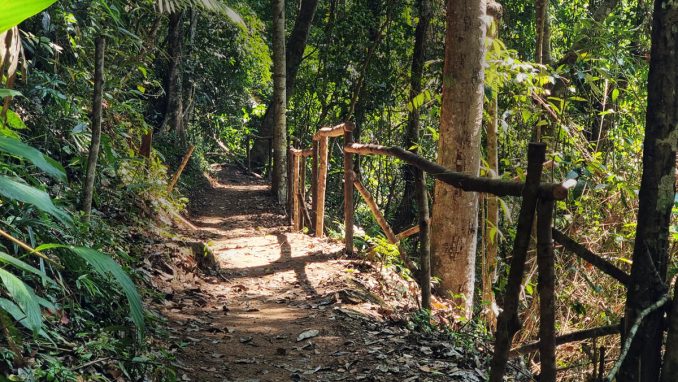
Khaoyai National Park is the first national park of Thailand, established in 1962, which includes rain/evergreen forests, grasslands, and wildlife. Due to its natural area setting, Khaoyai National Park attracts many visitors which makes the natural environment and human recreation overlap. It has seven nature trails to allow people to explore and learn about nature. One of them is trail No. 2.
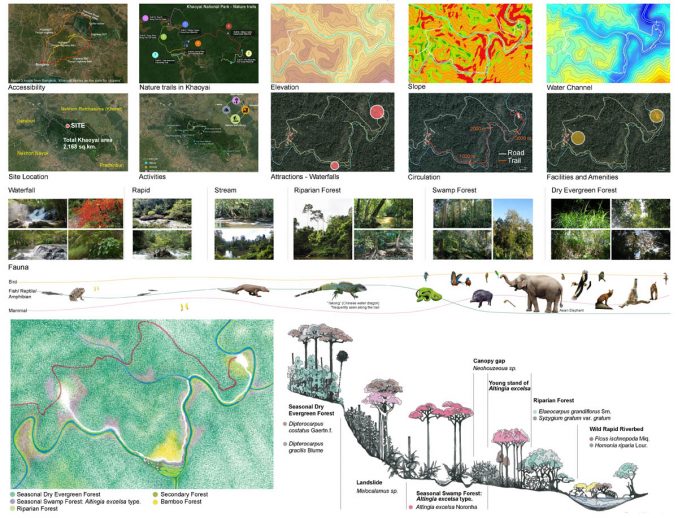
Trail No.2 namely Pha Kluai Mai – Heo Suwat waterfall trail, the 160th anniversary of Thai-German Friendship Trail, is the first riparian trail in the Thailand National Park. It is a 3.2 kilometer trail along the Lam Takhong stream in Pak Chong district, Nakhon. Ratchasima. However, the existing trail No.2 had a lot of man-made materials which affected a negative impact on nature and wildlife. So, according to this context, the project’s challenge is:
“How do we design the best solution for nature, wildlife, and human by using a minimum of resources and considering ecological diversity?”
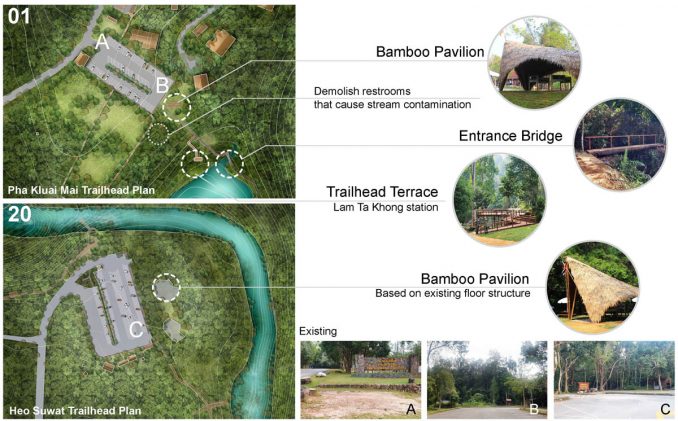

Following the question, integrating humans in nature as necessary is our concept. We designed the outside of the trail as a human service area that combines a natural sense. On the inside, nature is the main priority, as an owner who welcomes visitors. The design includes trail reconstruction, trailhead design (at both entrances of the two-way trail), existing structural renovation (Terrace and Bridge), and interpretive signage along the trail.
“When coexistence between wildlife and humans is both a challenge and an opportunity to learn about nature.”
Design strategies
– Prevent wildlife and plant interference and effects by using eco-friendly material as needed.
– Support and raise environmental awareness — wood was used instead to reduce carbon footprint and toxic from the existing materials.
– Creates a safety learning trail, followed by education and recreation – improve existing trail surface considering simple trail-building method, while also supporting animals and nature.
– Represent the ‘root’ of the site and local identity – renovate the trail with the knowledge of the Khorat’s wood construction.
– Access hierarchy for each generation.
– Easy for maintenance.
Design approach
1. Trailhead:
– Provide information and warning for visitors. And serves as an assembly space before entering the trail.
– Universal design was applied for all generations.
2. Terrace: The existing waterfront terrace and bridge were reconstructed to improve safety.
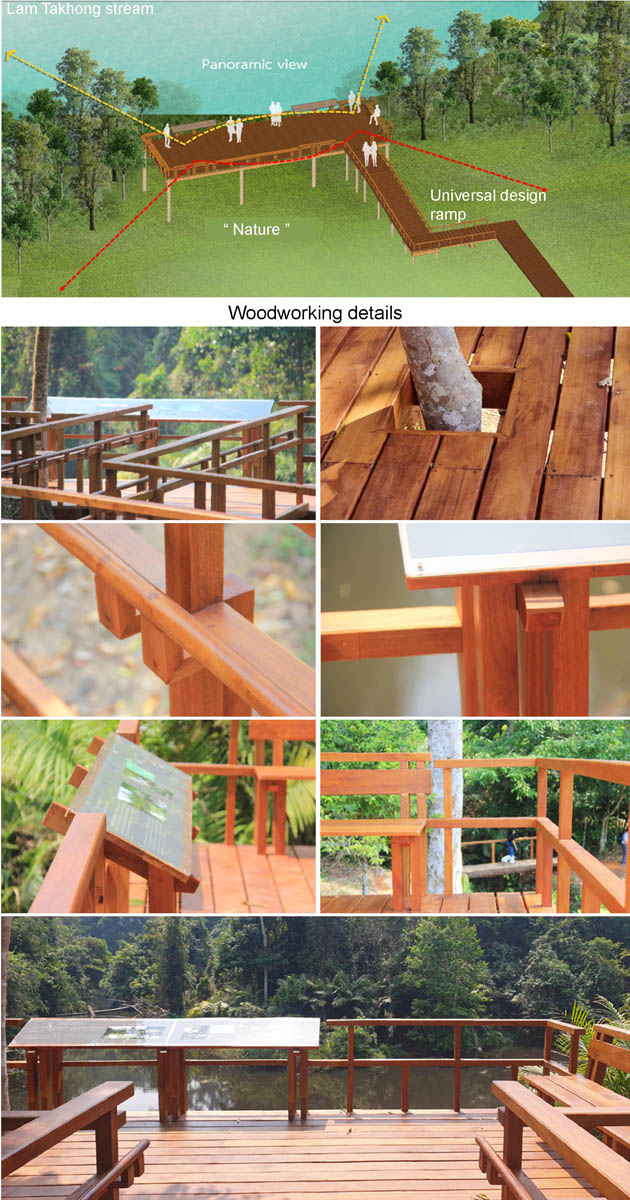
– Provide a panoramic view of Lam Takhong.
– Universal design was applied for all generations.
3. Entrance bridge: Made of environmental materials that are in harmony with the surroundings.
4. Trail:
– Natural materials and low-impact construction methods were used to make it wildlife-friendly and easy for the construction process in deep forest conditions.
– According to site analysis, the signage is divided into 20 learning stations, such as a swamp, a dry evergreen forest, riparian flora, or a unique native species: Renanthera coccinea and Takong (Chinese water dragon) to represent the trail characteristics.
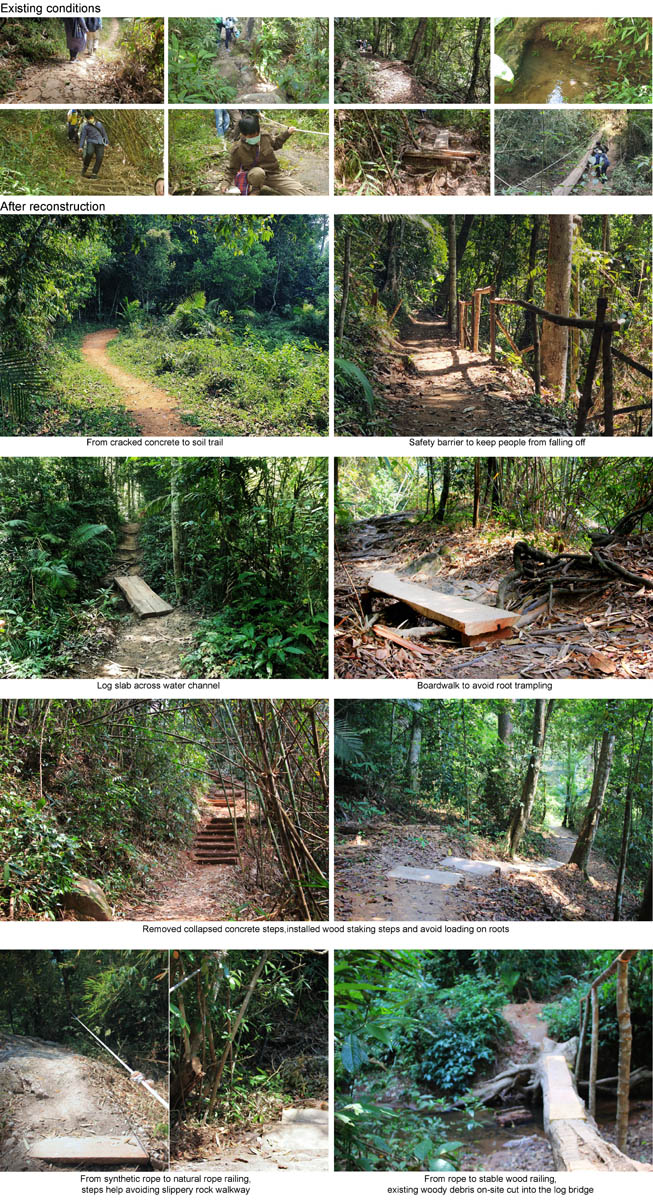
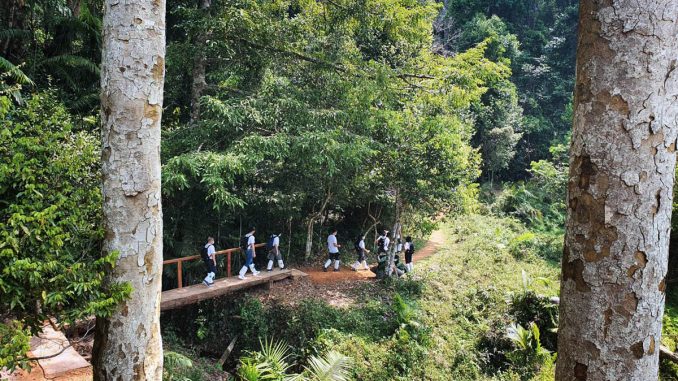
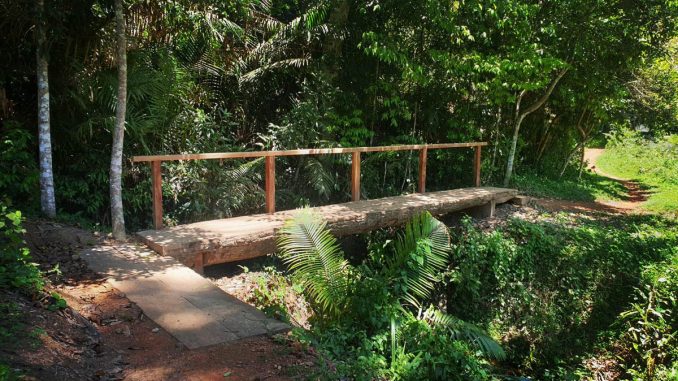
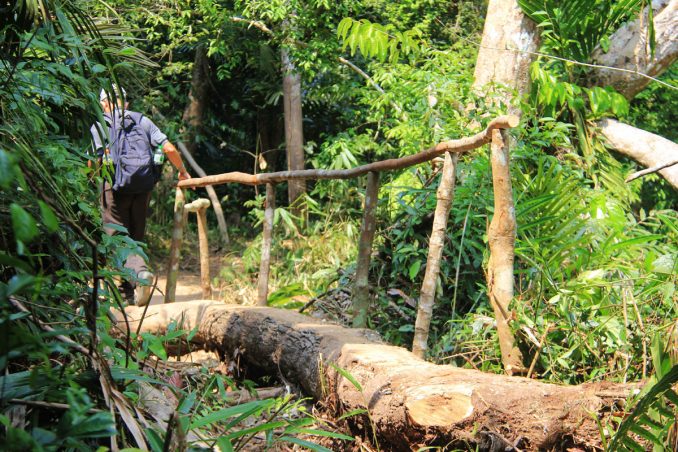
In conclusion, the more natural the area, the less the designers intervened to provide spaces for humans while also having a minimum impact on the environment.
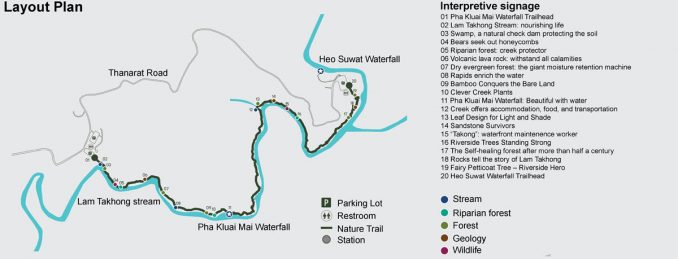
Heo Suwat Waterfall Trail | Pak Chong, Thailand | Arsomsilp Community and Environmental Architect
Landscape Architect: Arsomsilp Community and Environmental Architect
Collaborators: Architect – Arsomsilp Community and Environmental / Engineer – Acting Sub Lt. Mr.Chanasid Patchouy / Adviser: Chulaporn Nantapanich (Northforest studio company limited) /Nature Interpreter and Nature Trail adviser – Mr.Nopparat Naksathit / Forest Ecologist – Rungsuriya Buasalee
Client: Department of National Parks, Wildlife and Plant conservation
